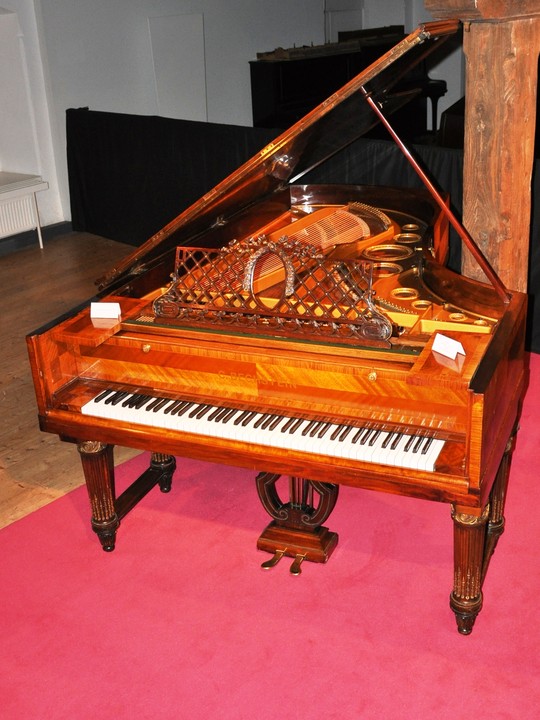AKM wrote: This caught my attention a lot. I'm very curious what exactly do you mean by "historical temperament". Meanwhile I'm going to start a new thread about this topic, you are more than welcome to join.
Forgive me if this is remedial information, but it is only in the last 100 years or so that pianos, and other instruments, have been tuned according to the scheme we call 12-tone equal temperament, in which each note on the piano is exactly 100 cents distance from the note below it or above it. 12-tone equal temperament is a compromise in intonation whereby it's possible to play any song in any key, but certain intervals are considerably out-of-tune compared to the pure, just intonation that you can achieve with chords played by a string quartet or a an a cappella group of singers.
For instance, this may never have occurred to you, but any interval of a major third played on a piano tuned to 12-tone equal temperament is significantly out-of-tune compared to a pure major third that can be sung by two singers or played by two violinists. Thus, all major chords played on a modern piano sound a bit sour in temperament to those of us with good ears who understand and can hear the difference.
Before this time in history, musicians throughout history used many different tuning schemes where the 1/2 steps were of different sized intervals, in order to approximate pure, just intonation. However all of these various tuning schemes (called temperaments) only sounded best in certain keys. If you played chords in remote keys, they would sound very badly out-of-tune.
None of the classic keyboard composers in history before about the year 1915 used a piano tuned to 12-tone equal temperament. They all used one of many different historical temperaments.
Pianoteq Standard and Pianoteq Pro have a menu of many different historical temperaments from which you can select. Choosing one of these instantly re-tunes the entire keyboard to the historical temperament.
Pianoteq Stage does not have this feature. Pianoteq Stage can only be used in 12-tone equal temperament.
Furthermore, before about 1915, irrespective of temperament, pianists did not tune their instruments to the modern base pitch of A=440. People in the time of Handel, Bach and Vivaldi tuned to about A=415, which is a half-step lower than A=440. Mozart, Schubert and Beethoven used A=430. I'm a tenor vocalist, and I can tell you that it's hard to sing the high notes in Mozart's beloved tenor opera arias in A=440, but it's easier to sing them in Mozart's A=430. The same goes for Handel's arias in A=415.
To access the historical temperaments in Pianoteq Standard or Pianoteq Pro, go to the Tuning panel and pull down the Temperament menu and try the different choices. You can acces even more choices by toggling the Microtuning Mode button to the right, which changes the "Diapason" field to the "Scale" field and enables a pull-down menu with a very large list of historical temperaments.
Read the owners manual section entitled 4.2 Temperament (starting on page 30 in the English language manual).
Last edited by Wheat Williams (10-02-2016 04:05)
Dayton, Ohio, United States of America
macOS 10.14.6 Mojave • Apple MacBook Pro (2017), no Touch Bar • 2.3 GHz Intel Core i5, 2 core • 8GB RAM
